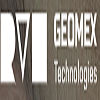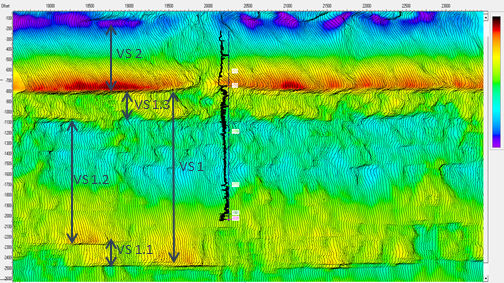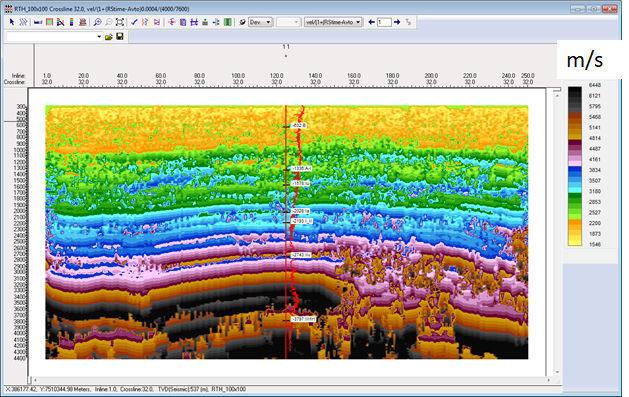
GEOMEX TECHNOLOGIES LLC
Puerto Vallarta, Jalisco, Mexico
GEOMEX TECHNOLOGIES LLC
!
The Best Scattering Seismic Technology in the World.
About GEOMEX TECHNOLOGIES LLC
Today’s changing and competitive environment spurs energy companies to optimize their expenditures and improve operating efficiency. GeoMex Technologies helps Upstream companies address industry challenges through our services and innovative technology solutions.
GeoMex Technologies is a Mexican privately held, seismic service and software company established by math scientists and skilled seismic experts in oil and gas industry with worldwide expertise to bring new seismic technologies on the worldwide service market.
Our team has designed innovative solutions for sweet spot selection and for reduce low-debit drilling
Our GeoMex Technologies team consists of math scientists, software designers and expert geophysicists, which have more than 30 years of practical work experience in the oil & gas industry.
Description of Services
- RTH processing
1. Preprocessing
2. RTH decomposition settings:
• Choice of voxel size, choice of initial velocity model, duration of the time interval, sampling frequency,
• Source regularization,
• Choice of difference scheme parameters, PML parameters.
• Decomposition of CDP data. Creation of VDCIG (HPC/GPU)
3. Interactive setting of attribute synthesis parameters on test cubes (HPC/CPU)
4. Stream processing of VDCIG data. Synthesis of full size seismic attribute cubes (HPC/CPU)
- RTH interpretation
|
## |
Problem |
RTH solution |
|
1 |
Target horizon identification |
RTH velocity-based horizons splitting |
|
2 |
Target structure mapping |
RTH-based high-precision structure mapping |
|
3 |
Thickness of productive horizon |
RTH-based thickness mapping |
|
4 |
Sweet spot problem |
RTH velocity-based sweet spot mapping |
|
5 |
Faults forecast |
RTH-based faults identification |
|
6 |
Forecast an anomalies along horizontal well |
RTH-based geomechanic properties prediction |
|
7 |
Highly productive deposits and zones of improved reservoir properties |
RTH-based multi attributes approach |






What we do
We offer the innovative scattering seismic technology – Reverse Time Holography (RTH). The RTH is a high-effective state-of-the-art solution for oil & gas prospecting and development including seismic service for horizontal drilling.
RTH technology opens up a new era of seismic exploration based on the concept of only wave scattering in the medium. Traditional reflections, on which seismic exploration has been based in the last 70 years, are in this approach only special cases of in-phase scattering and nothing more.
The RTH approach answers the next Grand Challenge Problems of Seismic:
- Increasing the spatial resolution of seismic attributes, including for support high-precision technology of horizontal drilling
- Improving the quality of seismic data processing and of geologic results without increasing the cost of field work
- Building a ultra-high resolution velocity model using new mathematical approaches and adequate computing resources
- Possibility of direct exploration of hydrocarbon deposits based on joint analysis of seismic and well logging data using artificial intelligence methods
RTH end-to-end technology consists from:
- RTH acquisition system
- RTH processing system
- RTH interpretation system
RTH SUMMARY
- The mathematical basis of the RTH technology is the method of full-wave seismic holography in reversed time (Reverse Time Holography).
- The input information for RTH processing system is seismic data from the RTH acquisition system or conventional 2D/3D medium-fold CDP field data.
- The RTH processing method includes, as a special case, the RTM method and is an alternative to the PSTM, PSDM, FWI, AVO/AVA/AVAZ, Acoustic Inversion, MVA methods.
- The result of HPC RTH processing is an original set of seismic attributes of high spatial resolution, which serve as the basis for further RTH interpretation system.
- The RTH technology is implemented in the form of original HPC parallel data processing programs and well-established RTH-attribute interpretation graphs in the conventional software environment of a geologist-interpreter.
- For the RTH interpretation system needs a well logging data.
- The RTH technology was created in 2017
The list of advantages of the RTH technology
- Representation of the studied geological environment in the form of a set of volumetric cells (voxels) of arbitrary size with the subsequent calculation of the attributes in each cell independently of each other
- The spatial resolution of migration images is 3-6 times higher compared to conventional depth migration before summation
- Velocity tomography with a spatial resolution of up to 1 meter
- Lack of near-surface layer problem
- Stability RTH to sparse regular and sparse irregular seismic systems of sources
- Simultaneous and independent calculation of all known seismic attributes, such as: RTM, AVO, Dip, Opening Angle, azimuthal and spatial scattering anisotropy and even more than 50 new, previously unknown attributes
- Time-dependent 4D Scattering Pattern






Life at GEOMEX TECHNOLOGIES LLC
RTH Elevator Pitch
“Ceomex Technologies” Company presents a revolutionary solution in the field of seismic data processing: the Reverse Time Holography method – RTH.
RTH, de facto, is the heart (engine) of the new seismic exploration of the 21st century – “Time-dependent scattering seismic”, significantly expanding the capabilities of traditional seismic reflection, which has dominated the world for the past 70 years.
The RTH method is based on two fundamental physical principles – time reversal (Reverse Time) and two-beam interferometry, which underlies Optical Holography.
In essence, RTH is a generalization of not only all RTM class depth migration methods, but also an alternative to whole group of methods such as velocity tomography methods (FWI), diffraction scattering methods for searching for fracture zones (CSPD), AVO methods, Acoustic Inversion methods, etc. The RTH method simultaneously calculates more than 100 seismic attributes.
Using RTH, predictions of most critical indicators and processes for oil and gas exploration and development of hydrocarbon fields are practically feasible.
RTH is vector generalizations of the well-known RTM (Reverse Time Migration) migration method, proposed 41 years ago. The difference lies in the method of decomposing the Common Shot Gathers (CSG) data into the Common Image Gathers (CIG) data. In RTM, the CIG data have a parameter dimension of 2, while in RTH they have a parameter dimension of 8. This fact significantly expands the class of scattering models under consideration and ensures the hyper-attributivity of the RTH method, which, along with the voxel nature of the method, is ideally combined with drilling data and ensures high technology and accuracy of geological and petrophysical prediction based on AI.
The method has no alternative for prediction based on horizontal wells
Highly efficient algorithms for fast calculation of RTH seismic attributes and prediction based on well data using AI methods are implemented in a specialized hardware and software package (RTH Image Engine) based on the latest generation of graphic accelerators with a performance of over one Petaflop.
The method has been successfully tested at 22 hydrocarbon fields, including the Teapot Dome field. 23 articles on RTH have been published in journals, presentations have been made at international conferences, including EAGE, SEG and SPE.


















